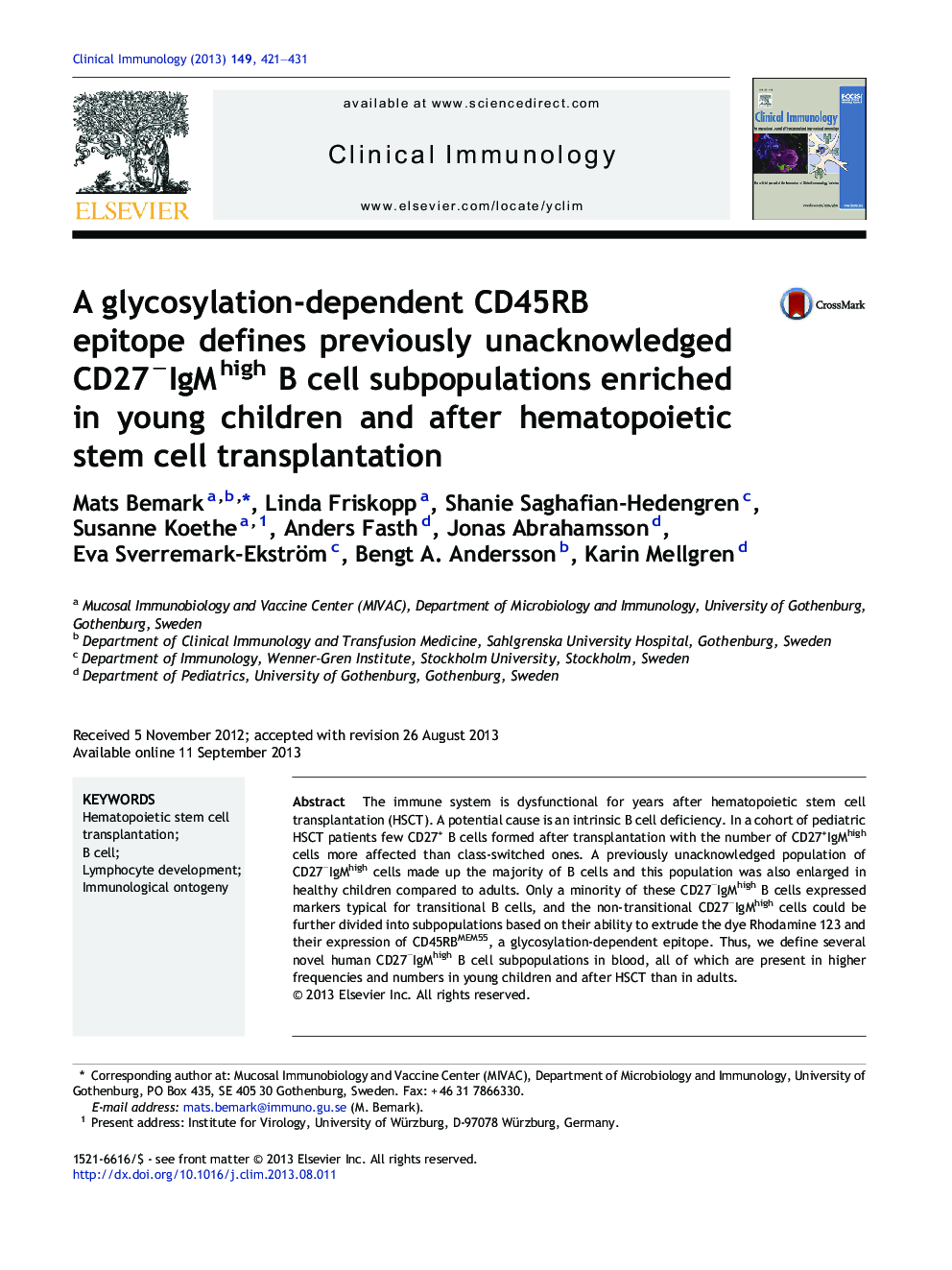| Article ID | Journal | Published Year | Pages | File Type |
|---|---|---|---|---|
| 6087606 | Clinical Immunology | 2013 | 11 Pages |
â¢The B cell compartment is still immature 2 years after pediatric HSCT.â¢The number CD27âIgMhigh cells that do not express transitional marker is increased.â¢This population also exists in healthy children and decreases with age.â¢The CD45RBMEM55 glyco-epitope divides the CD27âIgMhigh B cells into subpopulation.â¢If combined with the dye Rhodamine 123, novel subpopulations can be defined.
The immune system is dysfunctional for years after hematopoietic stem cell transplantation (HSCT). A potential cause is an intrinsic B cell deficiency. In a cohort of pediatric HSCT patients few CD27+ B cells formed after transplantation with the number of CD27+IgMhigh cells more affected than class-switched ones. A previously unacknowledged population of CD27âIgMhigh cells made up the majority of B cells and this population was also enlarged in healthy children compared to adults. Only a minority of these CD27âIgMhigh B cells expressed markers typical for transitional B cells, and the non-transitional CD27âIgMhigh cells could be further divided into subpopulations based on their ability to extrude the dye Rhodamine 123 and their expression of CD45RBMEM55, a glycosylation-dependent epitope. Thus, we define several novel human CD27âIgMhigh B cell subpopulations in blood, all of which are present in higher frequencies and numbers in young children and after HSCT than in adults.
